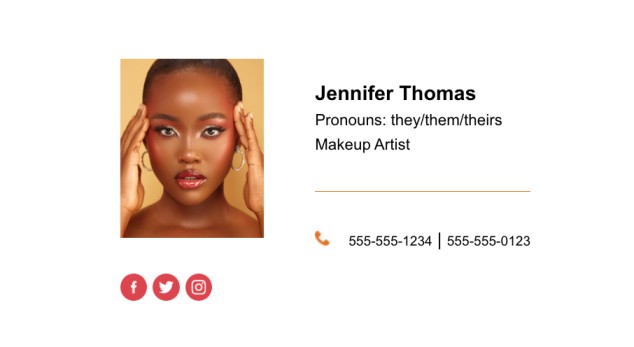How to Include Pronouns in Email Signature


Adding pronouns to your email signature creates an inclusive workplace environment where all employees feel respected and valued. With high remote work rates in 2025, email is the primary communication channel for many professionals, making clear pronoun usage more critical than ever. When you add your preferred pronouns in your email signature, you eliminate assumptions about gender identity and reduce miscommunication. Companies implementing email pronouns also report higher employee satisfaction scores and better retention rates among diverse talent.
HubSpot's Email Signature Generator streamlines pronoun inclusion with dedicated pronoun fields, professional templates optimized for all email clients, and automatic HTML formatting that ensures pronouns display correctly across devices. The tool generates signatures that meet corporate accessibility standards while maintaining a visual hierarchy that places pronouns prominently without overwhelming other contact information. Generate your email signature with pronouns in under 60 seconds!
Learning how to write your pronouns correctly ensures professional clarity in all business communications. List pronouns using the standard subject/object/possessive format: she/her/hers, he/him/his, or they/them/theirs.
Some professionals use shortened versions like she/her or they/them when space is limited in their pronoun signature. Multiple pronoun sets like "she/they" indicate comfort with either option, commonly used by non-binary professionals who accept multiple pronouns.
When adding pronouns in your email signature, place pronouns immediately after your name for optimal visibility: "John Anderson (he/him)". For signatures with multiple lines, position pronouns on the second line directly below your name. Keep formatting consistent with your overall signature design using the same font, size, and color as your name and title.
Include pronouns in your work signature effortlessly with HubSpot’s Email Signature Generator. See this pronouns in email signature example that demonstrates proper pronoun placement and formatting across industries:

Corporate Executive Format:

Creative Professional Style:

Academic Format:

Startup Founder Format:


HubSpot's Email Signature Generator automatically formats gender pronouns in an email signature according to 2025 professional standards, ensuring your signature displays correctly across all email platforms including Gmail, Outlook, and Apple Mail. The tool generates mobile-responsive HTML signatures in under 60 seconds, with built-in pronoun fields that eliminate formatting guesswork.